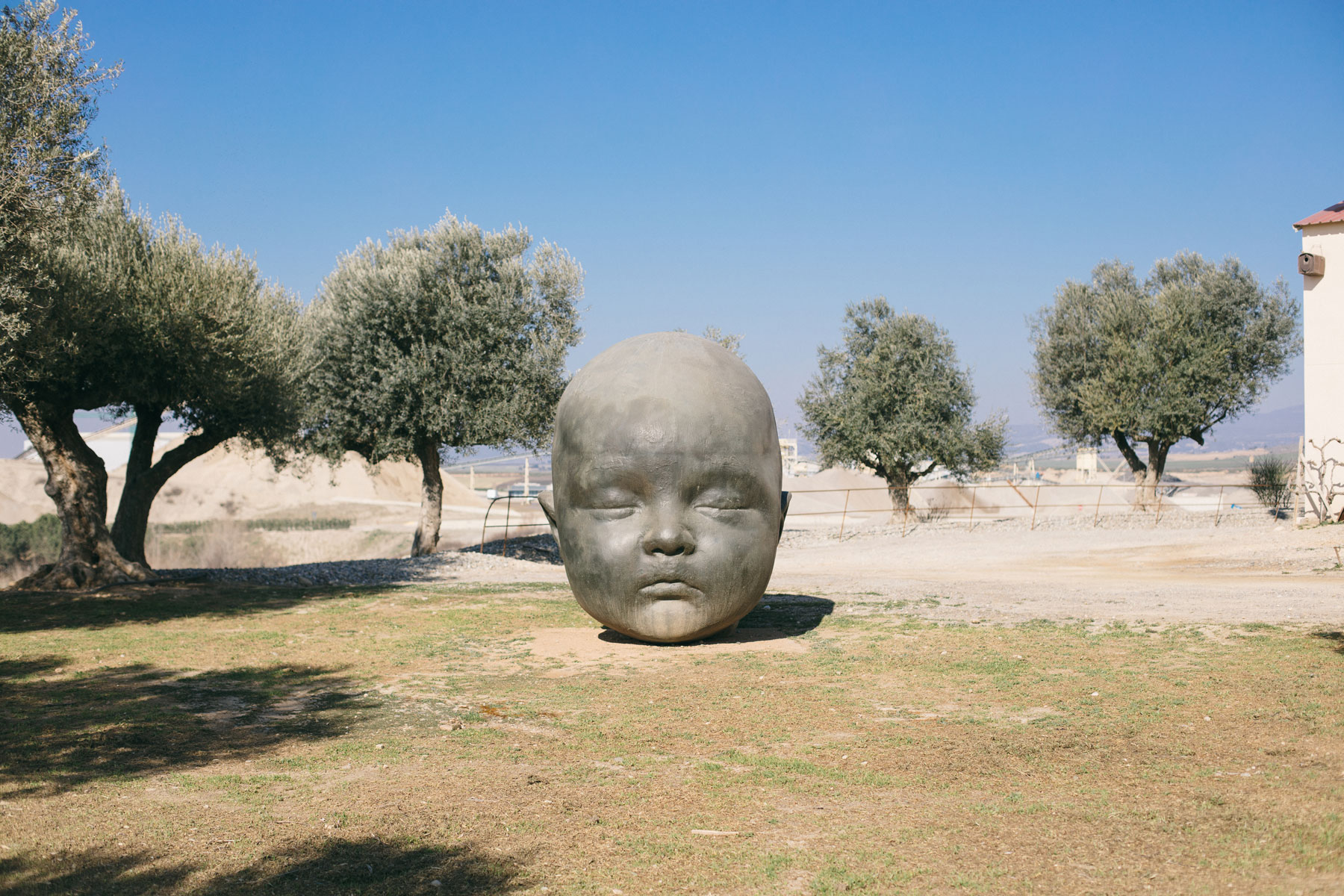When his grand-daughter Carmen was born, the artist felt that he had to use the language of sculpture to capture the essence of that image. López only represented the head given that the face is where the artist believed that the expression of character and emotions are concentrated. These pieces show us the emotion that the artist felt when looking at his new-born granddaughter’s face.
Antonio López began sculpting the head of the sleeping baby when it was still misshapen right after birth. However, the baby girl began to wake up, and so the project expanded to a new figure with her eyes open. The dialogue between the two pieces can be read as evoking the passing of time, as a metaphor for dreaming and wakefulness, night and day, two moments of fully expressive retraction.
The artist worked on both at the same time, in parallel, and ended up creating a whole series of portraits of Carmen in different materials and dimensions. López began by working from a wax model after which he moved on to other materials such as bronze in this case or gold from the gravel works, which he used to make two small-format pieces that are part of the Fundació Sorigué collection.
El Día y La Noche are larger than human scale, and in the artist’s words, “by increasing the size of the heads, they become a symbol. They can be put in the street and they have a completely different life from the privacy of natural size.” By giving them this new scale, they are no longer an individualised portrait, equipping these pieces with a more universal and symbolic character, which is emphasised in such a singular context.

